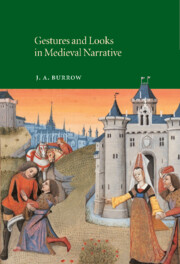6 - Afterword
Published online by Cambridge University Press: 22 September 2009
Summary
Present knowledge about the forms and functions of non-verbal signs in the past is very patchy and imperfect. The subject has, for one thing, never received the kind of systematic, incremental study that scholars have long devoted to past languages. It has no established discipline corresponding to that of historical philology. Hence, when the book of essays entitled A Cultural History of Gesture was published in England in 1991, it could be hailed as ‘an excitingly original project which wholly succeeds in its novel aims’. The subject has certainly been neglected (though less by German than by English writers), and much remains to be done – in the first place, by establishing facts and dispelling fancies. Yet historical knowledge about looks and gestures can never hope to match what is known about past languages, for the evidence itself is so much more sparse and limited. Nor can it even begin to approach the knowledge available to experts on contemporary NVC. As Keith Thomas remarks in his introduction to the Cultural History, ‘it is much harder to study the history of gesture and bodily comportment than to observe their present-day manifestations’ (p. 4). Accounts of present-day usage, indeed, make one painfully aware of how much historians are bound to miss in the usage of the past, and not least in the Middle Ages.
- Type
- Chapter
- Information
- Gestures and Looks in Medieval Narrative , pp. 180 - 185Publisher: Cambridge University PressPrint publication year: 2002



